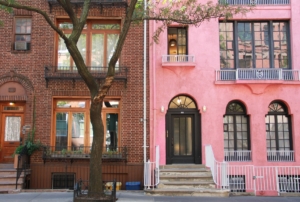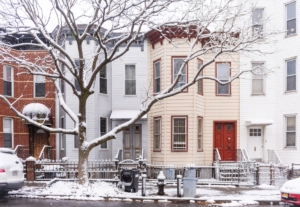Out today, StreetEasy’s Q1 2017 Real Estate Market Reports show that rents in both Manhattan and Brooklyn continued to decline. According to StreetEasy Senior Economist Grant Long, a key contributor to easing rents is a market that’s been saturated by new construction.
“A surge in new construction, particularly at the high end of the market, has had a ripple effect throughout the market and pushed down rents across the city, particularly in Brooklyn,” said Long. “Renters planning on signing a new lease this year are likely to have more negotiating power as competition starts picking up among new buildings vying for the attention of prospective tenants.”
See below for additional rental and sales trends across the two boroughs, as well as an interactive map that shows how rents have changed in each neighborhood over the last year.
Key Findings – Manhattan
- Manhattan rent prices continue to decline. Manhattan’s median rent price was down 1 percent compared to last year and has dropped steadily since last fall[i].
- Upper Manhattan the only Manhattan submarket where rent prices rose. The median rent price in Upper Manhattan was up 3.2 percent year-over-year, though the pace of growth slowed from the prior quarter.
- Rents in hot Downtown Manhattan neighborhoods fell the most (SEE MAP BELOW). Of the 19 neighborhoods where median asking rents fell year-over-year, 11 were in the Downtown submarket, including Little Italy, Battery Park City, West Village and Greenwich Village.
- Median resale price in Manhattan rose just over 1 percent since last March. The Manhattan median resale price increased slightly to $987,997 in Q1 2017[ii]. Prices rose the most in Upper Manhattan, up 6.5 percent from Q1 2016 to $658,393.
- Homes in Manhattan spent nearly 80 days on the market in Q1 2017, the highest level since 2011. In Midtown, homes spent a median of 92 days on the market, the longest period among all Manhattan submarkets[iii].
[tableau server=”public.tableau.com” workbook=”priceIndices” view=”StreetEasyPriceIndex” tabs=”no” toolbar=”no” revert=”” refresh=”yes” linktarget=”” width=”600px” height=”820px”][/tableau]
Key Findings – Brooklyn
- Brooklyn rents fell to their lowest level since Q3 2014. Brooklyn’s median rent price fell 4.2 percent relative to Q1 2016 and dropped steadily since fall 2016.
- New construction around Downtown Brooklyn weighed on the Brooklyn rental market. Renters had 27.6 percent more options to choose from in Q1 2017 relative to the same period in 2016. Inventory in South Brooklyn jumped the most – up 45 percent year-over-year[iv].
- Brooklyn’s median resale home price rose almost 6 percent over the past year. The median resale price was $578,290 in Q1 2017, with Prospect Park reporting the greatest annual price growth, up 11.7 percent since Q1 2016.
- Prices rose the most in more affordable submarkets. In East Brooklyn, the median resale price was up 9 percent to $493,612. In South Brooklyn, the median resale price rose 7 percent to $435,068.
- North Brooklyn was the only Brooklyn submarket with falling prices. The median resale price fell 4.75 percent from Q1 2016 to a median resale price of $865,804.
- Buyers had more homes to choose from in Q1. There were 5.3 percent more homes for sale in Brooklyn relative to the same period last year[v]. North Brooklyn reported the greatest inventory gains among all Brooklyn submarkets, up 27.8 percent from Q1 2016.
[tableau server=”public.tableau.com” workbook=”AnnualChangeinMedianRent” view=”Dashboard1″ tabs=”no” toolbar=”no” revert=”” refresh=”yes” linktarget=”” width=”600px” height=”770px”][/tableau]
[tableau server=”public.tableau.com” workbook=”2017Q1MarketOverview” view=”Dashboard2″ tabs=”no” toolbar=”no” revert=”” refresh=”yes” linktarget=”” width=”600px” height=”870px”][/tableau]
[i] Similar to the StreetEasy Price Indices, median rents are measured by the StreetEasy Rent Indices. By including only valid and verified listings from StreetEasy and employing a repeat rentals approach, the indices emphasize the changes in rent on individual properties and not between different sets of properties. Full methodology here: http://streeteasy.com/blog/methodology-streeteasy-rent-indices/
[ii] Median resale price is measured by the StreetEasy Price Indices, monthly indices that track changes in resale prices of condo, co-op, and townhouse units. Each index uses a repeat-sales method of comparing the sales prices of the same properties since January 1995 in Manhattan and January 2005 in Brooklyn. Given this methodology, each index accurately captures the change in home prices by controlling for the varying composition of homes sold in a given month. Data on sales of homes is sourced from the New York City Department of Finance. Full methodology here: http://streeteasy.com/blog/methodology-streeteasy-price-indices/
[iii] Time on market is measured as the numbers of days from the original listing on StreetEasy to when it enters contract.
[iv] Rental inventory data is based on rental listings of condos, co-ops, townhouses and single-family homes available on StreetEasy.
[v] Sale inventory data is based on sales listings of condos, co-ops, townhouses and single-family homes available on StreetEasy.








